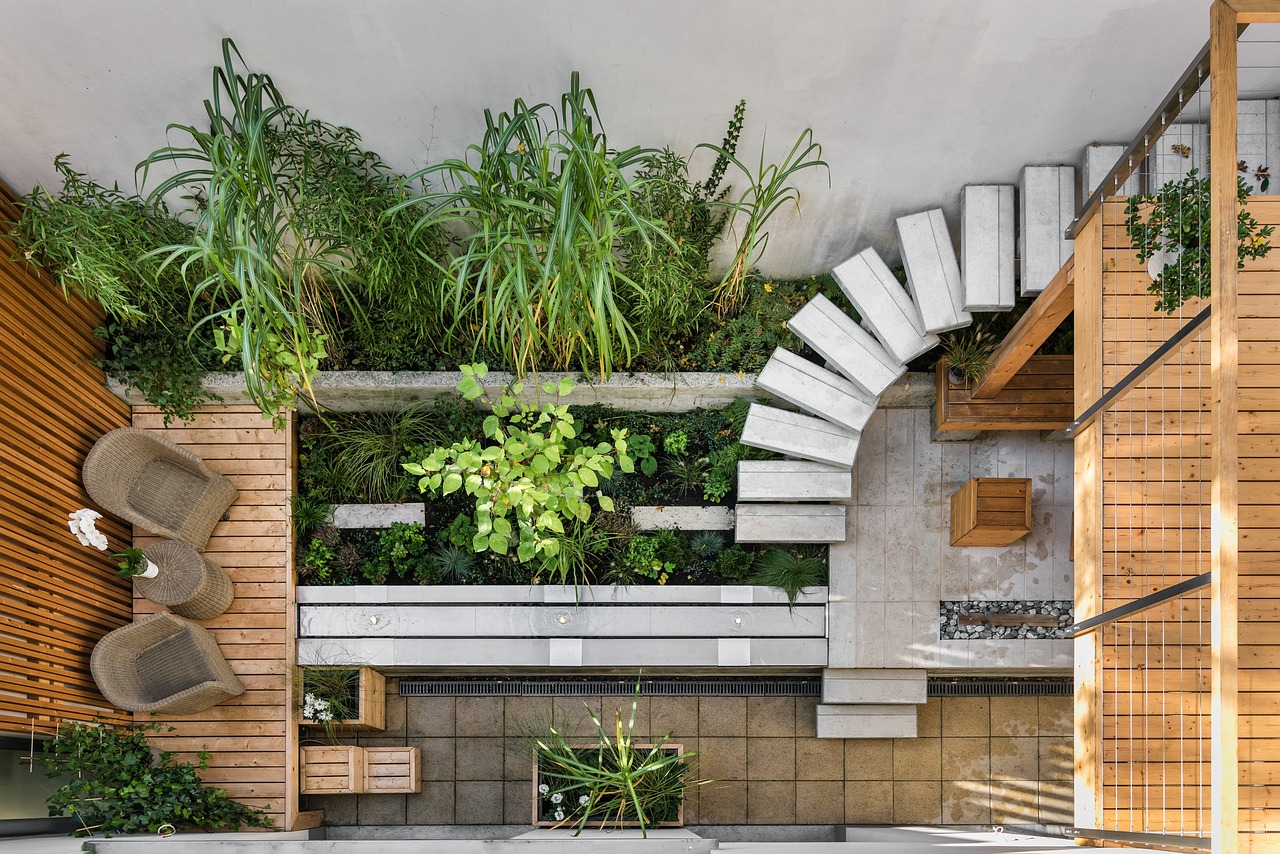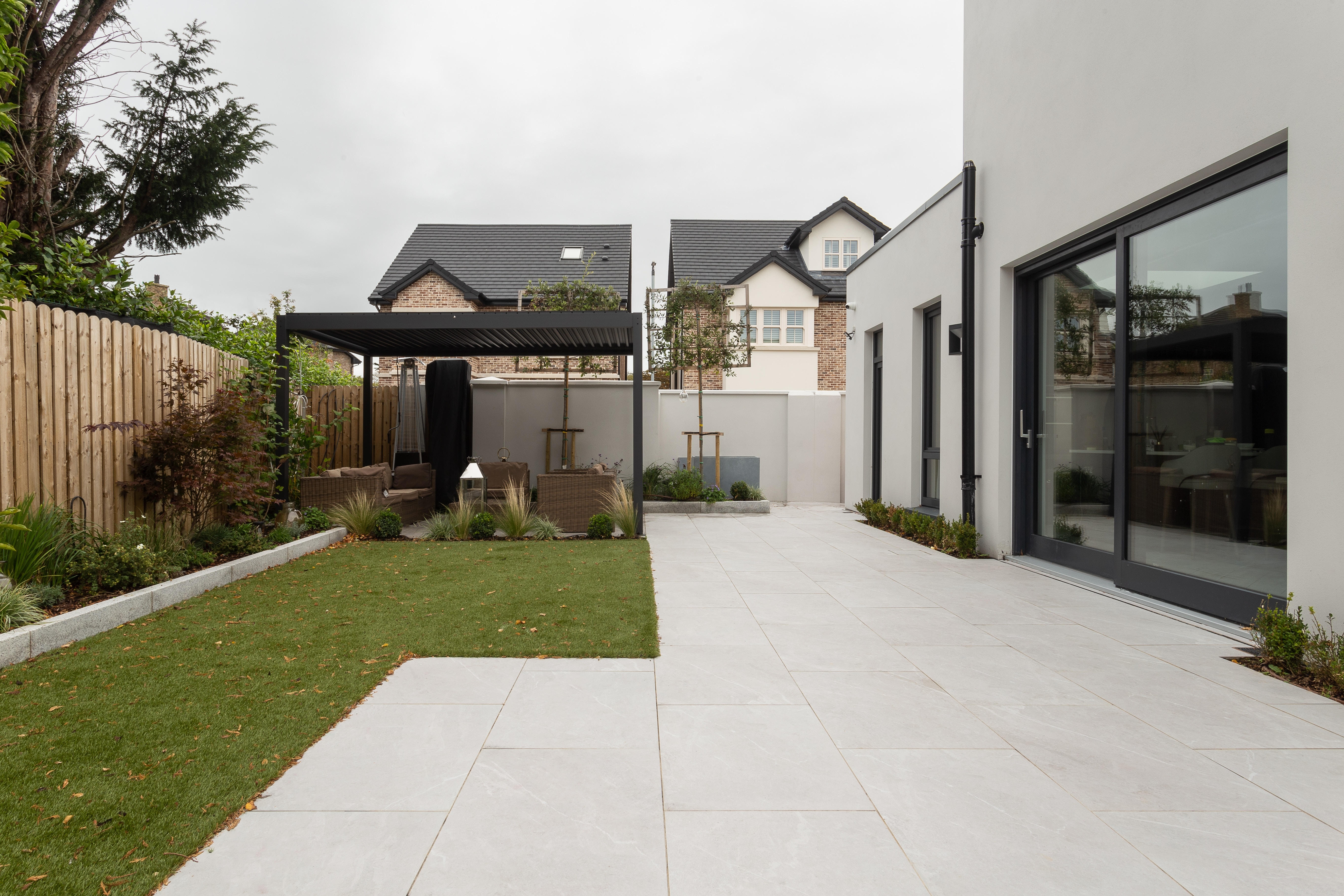There’s a famous quote from pioneering English gardener and landscape architect, Lancelot “Capability” Brown, where he compared the structure of a garden to the structure found in literary composition:
“Now there I make a comma, and there, where a more decided turn is proper, I make a colon; at another part, where an interruption is desirable to break the view, a parenthesis; now a full stop, and then I begin another subject.”
The point he was making was for us to think about garden design like writing. It needs structure and the correct punctuation to make it an enjoyable read.
Creating a well-designed patio or garden needs the same. We need to consider both the aesthetic and functional elements. Figure out how they flow and work in harmony.
If you’re planning new or just looking to freshen things up in your outdoor space, then now is the perfect time to start the planning. You can tackle the work in spring and have it ready to enjoy come summer.
Here are Lazy Susan’s fundamentals to keep in mind for a successful patio and garden design:
The Aesthetic

When we talk about patio and garden design aesthetics, we are referring to the visual and stylistic elements that are incorporated into the design of your outdoor space. The things that make it look good or a certain way.
These aesthetics can vary widely based on individual preferences, architectural styles, the size of the space, and the overall theme or purpose of the garden itself.
For the design team here at Lazy Susan, the critical aesthetic elements in a well-designed patio and garden are:
1. Balance & Symmetry
For a patio and garden design to work, you must achieve a sense of balance by distributing visual weight evenly throughout the space. This can be achieved by using symmetry to help balance the patio and create a more formal space or asymmetry for a more casual look. For us though, the best garden designs utilise a combination of both to keep things interesting on the eye and welcoming.
2. Colour & Harmony
Select a colour palette for your patio and garden that best complements the exterior of your home and creates a cohesive look with the interior. Take into account any existing planting schemes or look for colours that work with and complement the rest of your home. Colour has a significant impact on the overall feel and atmosphere of a garden and patio. The right colours will make your outdoor space feel welcoming, cosy, and relaxing.
3. Focal Points
Good garden design just like good interior design needs a focal point or points to draw the eye and help balance the space as a whole. Use eye-catching elements like a garden furniture, a water feature, or statement planting such as a tree to draw attention and add interest to the space. The right items will help pull the different elements or zones in the garden together and best determine the purpose of each be it for outdoor dining, relaxing, growing vegetables, kids play area, etc.
4. Planting
No garden is complete without planting. It helps blur the lines between the garden itself and the indoor and outdoor living spaces. Select a variety of plants with different colours, textures, and heights to bring impact and incorporate seasonal blooms for year-round visual interest.
5. Texture & Materials
Often overlooked, texture is perfect for bringing a multi-sensory experience to your garden. It should not just influence how the space looks but also how it feels, smells and sounds. Introduce texture through plant choices, hardscape materials, and garden furniture. Consider the texture of paving, gravel, and decorative elements, and what they will bring to the space. Things should not only look good but smell good and feel good to the touch or underfoot.
6. Transition
A smooth transition between the different zones in your garden and from the indoor to the outdoor is essential. Use similar materials (such as tiling) or a colour scheme to connect the interior and exterior. The best patio and garden designs are free flowing, light and allow for easy movement from zone to zone.
7. Privacy & Enclosure
Privacy is critical in any outdoor space to create a place where you can be comfortable and fully relaxed. Create a sense of enclosure with strategic planting such as bamboo, pergolas, trellises, or outdoor curtains. These elements can define your outdoor living space and provide intimacy in a large or overlooked garden.
8. Outdoor Lighting
Incorporate outdoor lighting for both the aesthetic and functional. Use a combination of ambient, task, and accent lighting on focal points to enhance the atmosphere in your garden. Install a scheme that gives equal consideration to both style and safety, so that the space looks good when the sun goes down but any potential trip hazards and pathways are visible (which is a nice segue into the next section).
The Functional

The functional elements of garden and patio design are just as important as the aesthetic.
They help to create a space that not only looks great but is also practical and well-suited to its intended use.
By carefully considering these functional elements, you can design a garden that not only looks appealing but also meets your practical needs and enhances your outdoor living experience.
1. Flow
Plan pathways that guide people through the garden and patio areas. Ensure there is enough space for comfortable movement. And not just physically. Our garden and patios need to appeal to us on many levels. One important but often neglected aspect is visual flow. Think about the way your eyes and bodies move through the space. Without a sense of movement, gardens can seem flat and boring, even if they are full of wonderful planting.
2. Seating
No garden or patio is complete without a place to sit. Provide comfortable seating areas for outdoor dining, lounging, or entertaining. Consider the number of people you want to accommodate and choose furniture accordingly to fit with the overall design scheme. As our resident garden design expert Lee aka The Garden Ninja says in his How to care for your garden furniture article:
“Garden furniture is an essential part of any garden design with seating allowing you to stop and take refuge in your outdoor space. There's a variety of furniture options with wooden, rattan and metal furniture to name a few. However, just like your garden will need tending to, so will your new furniture.”
3. Shade & Sun
Integrate shade elements such as parasols, awnings pergolas, or shade sails. Consider the orientation of the sun and how it impacts different parts of your garden throughout the day. For us, the best gardens are influenced by the sun and make the best of the way it will dramatically change its appearance, depending on the time of year, day, etc.
4. Function
We touched on this above and one of the best ways to design a garden or patio is to divide the space into functional zones based on how you intend to use it. For example, your patio space could have a separate dining area from the more laid-back lounge space. Good design should not only create a space that is visually appealing but also practical and well-suited to the needs and activities of those who want to enjoy it.
5. Storage
A tidy garden is a happy garden so any well-designed space, regardless of size, should include storage solutions for gardening tools, cushions, and any other outdoor items. This will help keep the space tidy, organised and safe to navigate. It will contribute to the overall functionality of the design by providing a designated place for gardening tools, equipment, etc, while also protecting them from the elements and ensuring a visually appealing and secure environment.
These elements serve as a guide but when combined they help to create an outdoor space that is a joy to look at and spend time in. Ultimately, a well-designed patio and garden should reflect your style and preferences. Experiment with different elements and be willing to adapt your design as your needs and tastes evolve.
If you have any photos of your Lazy Susan Garden Furniture in your garden or on your patio, we’d love to see a few for our Do Some Good charity campaign. You can tag us @LazySusanFurniture on Instagram or Facebook or Upload Here.



